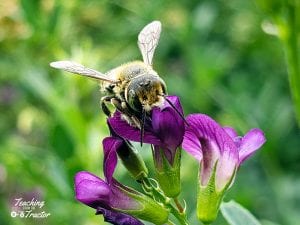
Pollination is one of the most important parts of raising alfalfa seed. Without pollination, there would be no seed to harvest. As soon as there are blooms on the alfalfa plants, it is time to put our pollinators to work.
We use leafcutter bees for our alfalfa seed pollination. I love these little guys and am amazed by what they do! Each year, the cutter bees lay their eggs in the nesting blocks we put out, and those eggs become our cutter bees for the next crop year. I just find the whole process fascinating!
Our bees originate in Canada and are sent directly to our bee guy who incubates them for us. He knows when they need to be ready and adjusts the temperature accordingly. We pick them up and take them directly to the waiting bee huts.
The nesting blocks are where the bees lay their eggs and where they sleep at night. The trays in the lower right corner are what the bees are incubated in and what we pick them up in. The cardboard covers at the top are placed over the trays until they get to the bee hut.
We then put the bees into the cardboard covers and place them on the top where they will be out of direct sunlight. Most of the bees are hatched by now, but the ones that aren’t will continue hatching as it heats up. They fly out and get right to work.
The hotter it is outside, the more active the bees are! In the picture above, you can see all the bees flying around. They are pretty fast which is good since it makes them more efficient, but it is harder to get good pictures of them hard at work. Here are a couple I was able to get:
The leafcutter bees are great at their job! They do have a little help though. There are honey bees around the field. While they aren’t as fast and efficient at pollinating the alfalfa, we will take all the help we can get. Here are some pictures of them:
The bees are all pretty friendly. The honey bees don’t bother you if you don’t bother them. The cutter bees usually only bite you if they get trapped in your clothes.
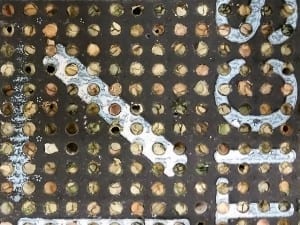 The cutter bees are active and working for a couple months. During this time, they cut leaves (hence the name leafcutter bee) for their nesting material. They then lay their eggs in these nests which are hopefully in the nesting blocks. Here is a picture of the nesting block full of their eggs. Each hole probably has several eggs in it, each with its own little nest.
The cutter bees are active and working for a couple months. During this time, they cut leaves (hence the name leafcutter bee) for their nesting material. They then lay their eggs in these nests which are hopefully in the nesting blocks. Here is a picture of the nesting block full of their eggs. Each hole probably has several eggs in it, each with its own little nest.
We collect the nesting blocks at the end of the season and store them in our shop to keep them from freezing when it gets cold outside. Then in January or February, we poke the bees out with a special machine and take them to our bee guy. The blocks are re-banded and stored for use next year. Some have to be thrown out because mice and birds damage them in the huts.
The bees are stored until it is time they go into the incubation rooms at which time they are placed in the trays. At the time they are poked out, there are samples taken. These samples will be x-rayed so we know how many live bees we have. This makes it easy for us to know how many bees we need to order for the next year. Some people can 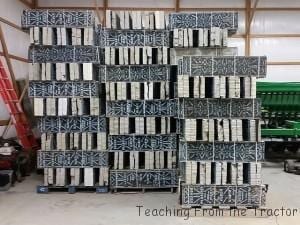 get 100% of their bee return back, but we haven’t mastered that yet. We usually get 50%-70% back.
get 100% of their bee return back, but we haven’t mastered that yet. We usually get 50%-70% back.
That pretty much wraps up the pollination process. We are almost done with alfalfa seed harvest on our established fields, and it looks like the bees did an amazing job this year! Way to go bees! Thank you for the great pollination job!! 🙂
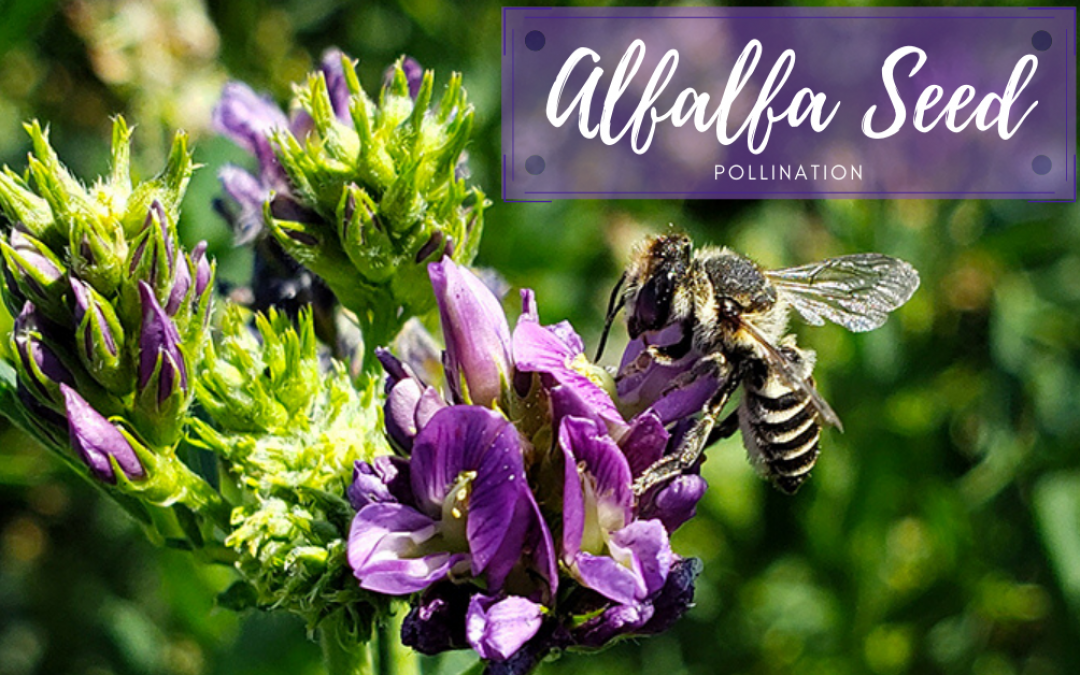
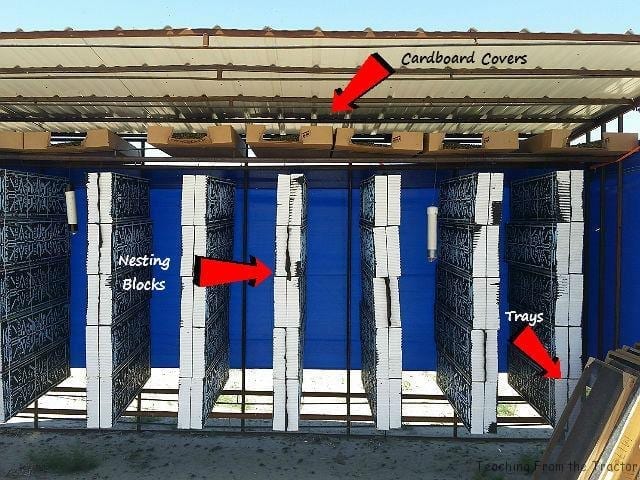
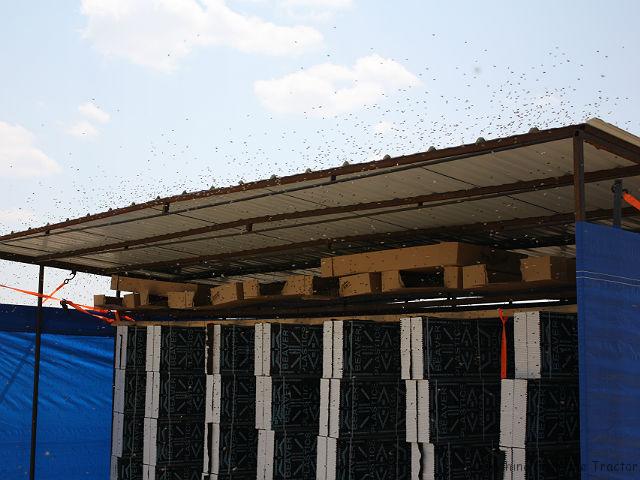
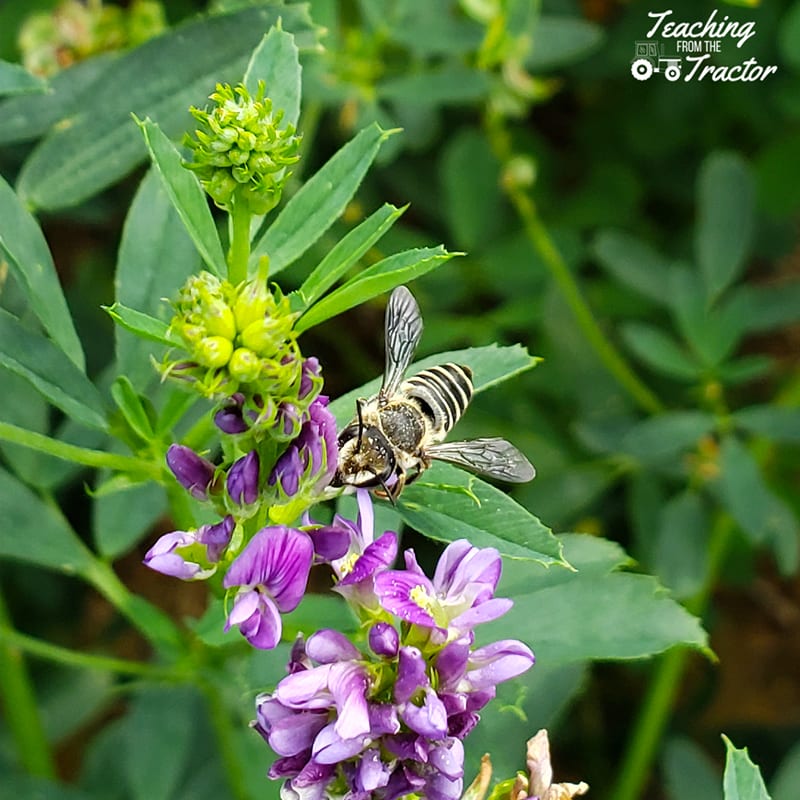
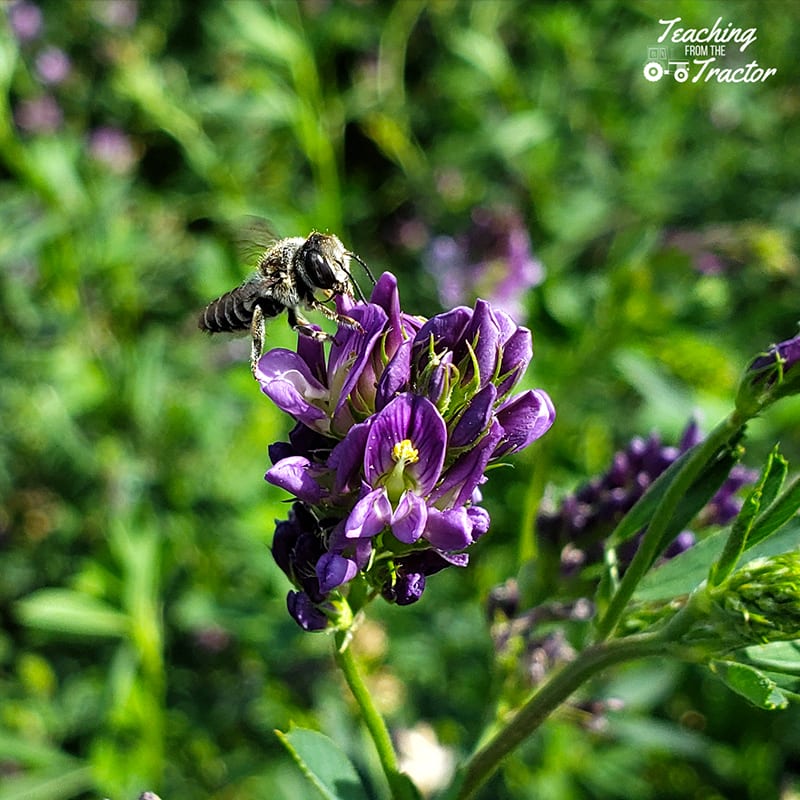
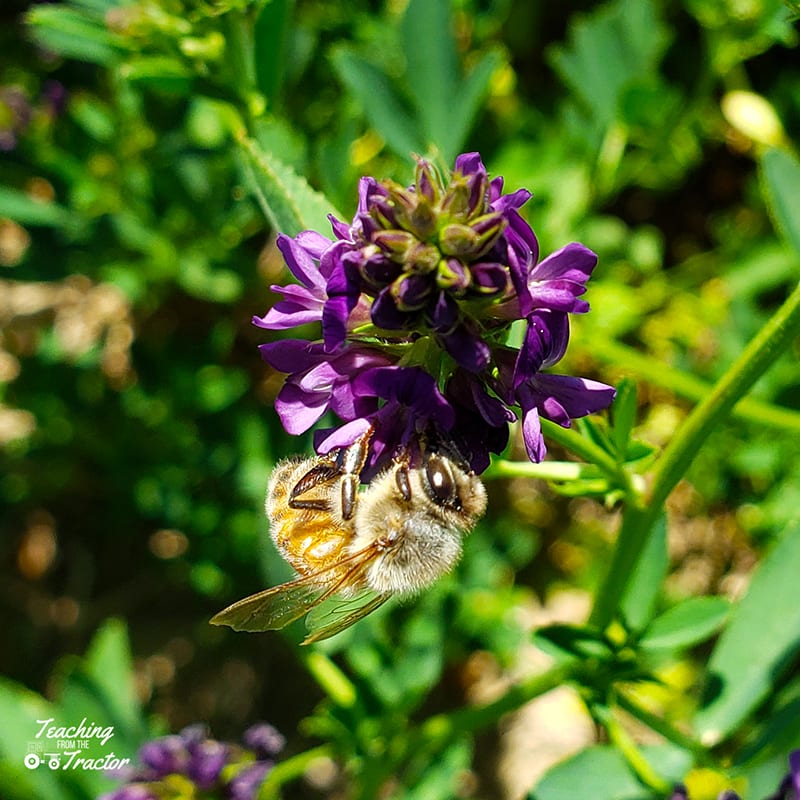
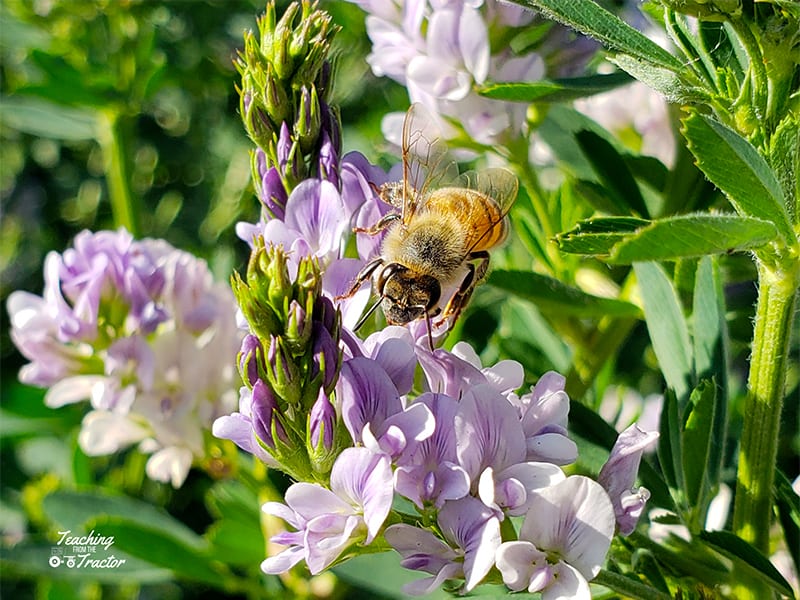
Wow, really interesting! That is a neat process.
It definitely is! The bees are my favorite part of raising alfalfa seed. I hope to do some videos when we put the cutter bees out in a couple months. 🙂